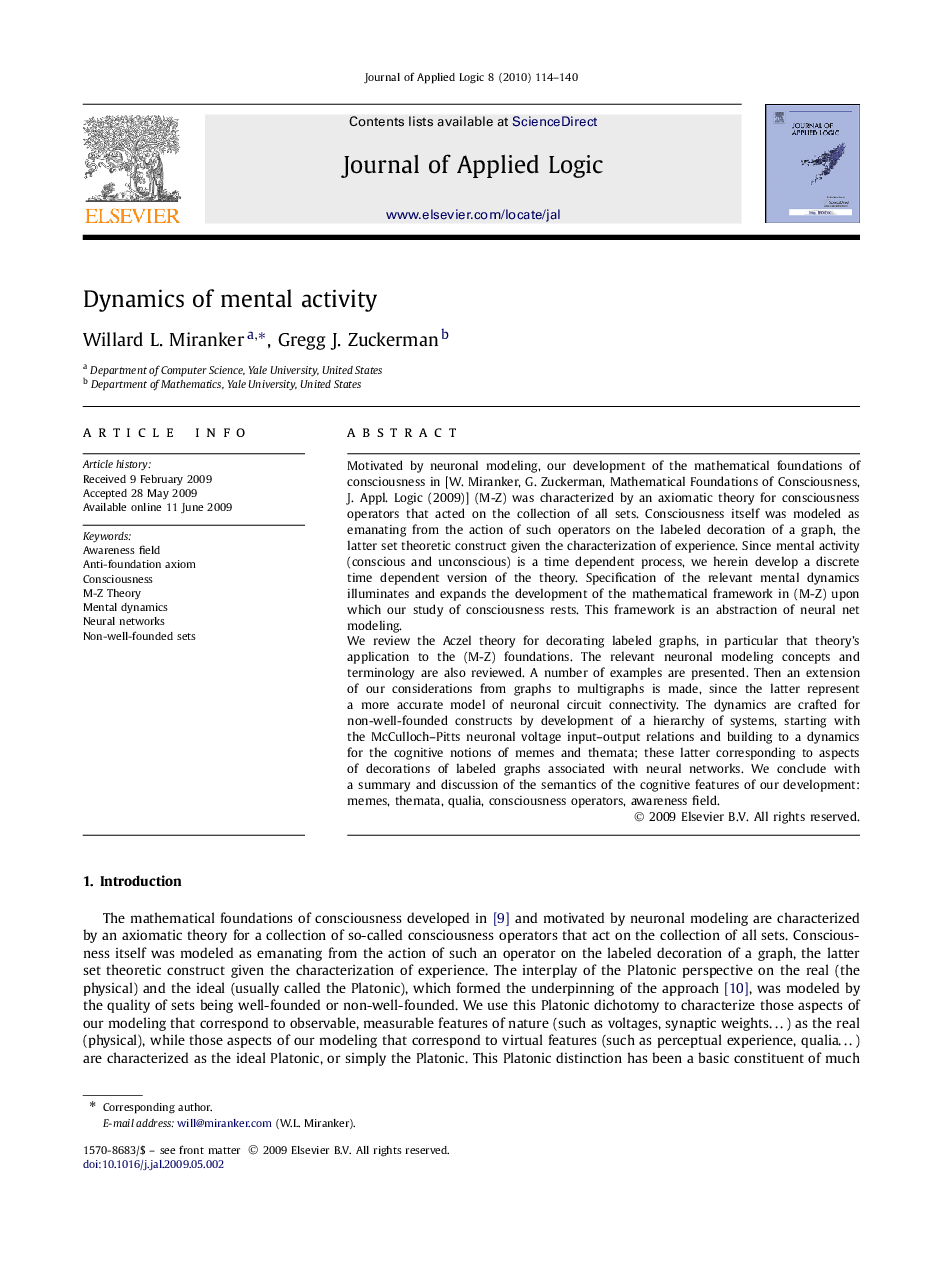| Article ID | Journal | Published Year | Pages | File Type |
|---|---|---|---|---|
| 4663211 | Journal of Applied Logic | 2010 | 27 Pages |
Motivated by neuronal modeling, our development of the mathematical foundations of consciousness in [W. Miranker, G. Zuckerman, Mathematical Foundations of Consciousness, J. Appl. Logic (2009)] (M-Z) was characterized by an axiomatic theory for consciousness operators that acted on the collection of all sets. Consciousness itself was modeled as emanating from the action of such operators on the labeled decoration of a graph, the latter set theoretic construct given the characterization of experience. Since mental activity (conscious and unconscious) is a time dependent process, we herein develop a discrete time dependent version of the theory. Specification of the relevant mental dynamics illuminates and expands the development of the mathematical framework in (M-Z) upon which our study of consciousness rests. This framework is an abstraction of neural net modeling.We review the Aczel theory for decorating labeled graphs, in particular that theory's application to the (M-Z) foundations. The relevant neuronal modeling concepts and terminology are also reviewed. A number of examples are presented. Then an extension of our considerations from graphs to multigraphs is made, since the latter represent a more accurate model of neuronal circuit connectivity. The dynamics are crafted for non-well-founded constructs by development of a hierarchy of systems, starting with the McCulloch–Pitts neuronal voltage input–output relations and building to a dynamics for the cognitive notions of memes and themata; these latter corresponding to aspects of decorations of labeled graphs associated with neural networks. We conclude with a summary and discussion of the semantics of the cognitive features of our development: memes, themata, qualia, consciousness operators, awareness field.
